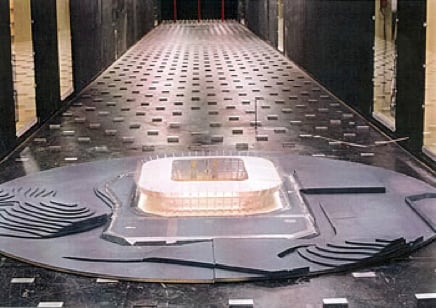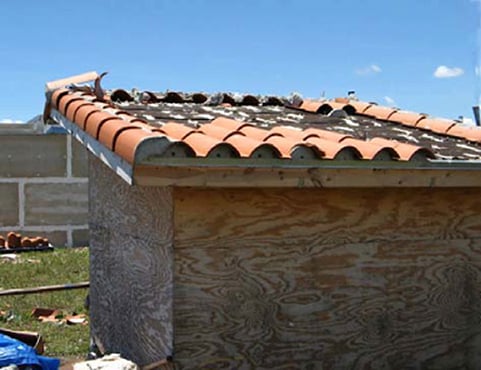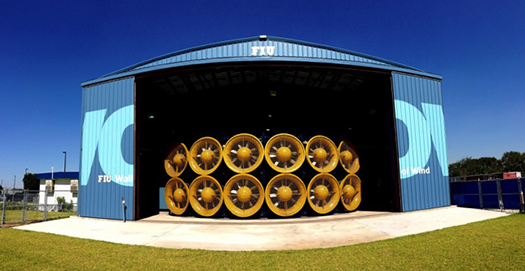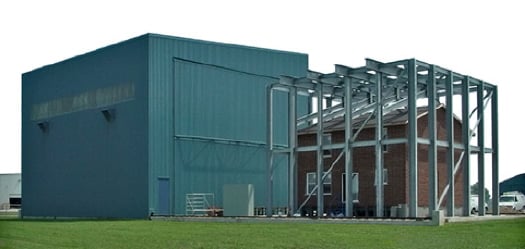
Where the Wild Winds Blow, Part II
Apr 26, 2013
Editor's Note: This article is the second in a two-part series on the current state of the art in the study of wind engineering. The first one discussed the computational simulation of the interaction between wind and structures. This article focuses on small-scale and full-scale physical testing.
For several decades, structural engineers have used physical testing to study the effects of wind loads on buildings. A variety of experimental methods are now in use, including wind tunnel testing on small-scale models, field observations within the natural environment, and full-scale testing of components and structures under simulated wind forces.
The technology behind physical testing has improved over the years, and its use has likewise evolved. Recently, several multimillion-dollar, state-of-the-art wind testing facilities have been constructed around the world. Experiments conducted at these laboratories are helping engineers identify failure mechanisms of building components, understand the differences in vulnerability between building types, study the effectiveness of mitigation features, and formulate design codes.
In the realm of catastrophe modeling, physical wind testing informs our understanding of how hurricanes, extratropical cyclones (winter storms), and severe thunderstorms can damage man-made structures and, ultimately, how that damage translates to economic and insurance losses.
A Brief History of Physical Testing
The way structures are designed to withstand wind loads has undergone significant changes over the past 100 years. In the first half of the 20th century, buildings were designed for static wind loads, and testing was done using small-scale models (e.g., 1:200) of structures subject to smooth, uniform wind flow in aeronautical wind tunnels.
The shortcomings of this approach became apparent during many wind-related incidents, including the Great Miami Hurricane of September 18, 1926, which left some permanent deformations in the steel frame of the 17-story Meyer-Kiser Bank building. This, along with the skyscraper boom of the 1920s and 1930s, increased interest in understanding wind forces on structures. Experts consequently recommended taking observations from actual buildings during strong wind events and to compare this field data with experimental wind tunnel results. The first measurements of this kind were taken from the Empire State Building in 1940, but the outcome was disappointing. The researcher at the time noted: "A comparison of the pressures on the model and those on the building shows clearly that the natural wind movements are not at all like those in a wind tunnel" (Schriever and Dalgliesh, 1968), indicating that basing design considerations on static wind loads was not a reliable method.
In the 1960s, Drs. Alan G. Davenport and Jack E. Cermark initiated the use of boundary layer wind tunnels at their respective laboratories at the University of Western Ontario and Colorado State University. These wind tunnels allowed the testing of small-scale models in a turbulent wind flow, in which the wind speed increases with height, as is the case with actual wind. Models of New York's World Trade Center and Chicago's Sears (now Willis) Tower were among the first buildings tested in this manner, and the practice continues to this day in the design and risk mitigation of many structures.
Since then, engineers have conducted full-scale experiments to provide a benchmark for replicating results from wind tunnel testing. These field test projects include the Aylesbury Experimental House, the Silsoe Building, the Texas Tech Building, and from the roofs of residential homes during hurricanes through the Florida Coastal Monitoring Program. However, due to instrumentation failure and the difficulty of capturing actual peak winds at a particular location and time, the results from these experiments have limited use.
Very recently, a few full-scale testing facilities capable of simulating hurricane-force winds on full-scale buildings were constructed. Four such facilities are discussed later in this article.
Usage and Benefits of Physical Testing
Wind tunnel testing has provided a wealth of data on the nature of wind loads on a wide range of structures and building components. Because these results have been validated with full-scale observations, they form the basis of current building design codes. Some recently built, well-known tall buildings, including Taipei 101 in Taiwan and the Burj Khalifa Tower in Dubai, were mainly designed using the results from boundary layer wind tunnel testing. Wind tunnel testing can be conducted not only for scaled buildings of various types and heights, but also for special structures like bridges and stadiums (see Figure 1).

Another benefit of physical testing is its ability to capture wind-related perils, including the impact from flying debris (see video below), which can breach the building envelope as a result of window or door damage, and consequent damage to interiors and contents from wind-driven rain.
However, because there can be significant differences in the peak pressures obtained from scaled model test results and full-scale measurements, it is important to also conduct full-scale experiments to study the performance of components like building envelope cladding, chimneys, and roofs. Furthermore, full-scale testing can capture uncertainties that can significantly affect performance, like workmanship and aging.

State-of-the-Art Testing Facilities
Currently, wind engineering research is undergoing dramatic changes with new large- and full-scale testing facilities being built worldwide. Four prominent testing facilities are described in the following sections.
Insurance Institute for Business & Home Safety Research Facility
In 2010, the Insurance Institute for Business & Home Safety (IBHS) opened a unique multiperil applied research facility in Chester County, South Carolina. This facility is capable of testing full-scale 1,200 to 2,400 sq. ft. buildings under simulated Category 1, 2, and 3 hurricane winds, wind-driven rain and debris impact, extratropical storms, and hailstorms.
Test results have shown that affordable and efficient mitigation measures, such as fastening the roof membrane and properly anchoring rooftop equipment, can significantly improve building performance during a hurricane. A destructive test comparing the performance of two commercial buildings, one constructed according to the IBHS FORTIFIED standard and the other according to conventional standards, is shown in the video below.
Other recent testing conducted at this facility includes hailstorm testing, a study on the effects of aging on the performance roof covers under wind and hailstorm, and a study of the impact of the sudden breach of the building envelope to building interiors and contents due to wind-driven rain.
Wall of Wind (WoW), Florida International University
In 2012, Florida International University's International Hurricane Research Center introduced the 12-fan Wall of Wind (WoW). In part a response to the damage inflicted by 1992's Hurricane Andrew in Miami, the WoW is the nation's first university research facility capable of simulating Category 5 hurricane winds.

Researchers have used the WoW to study how architectural features of roofing materials affect roof pressure distribution (Li, 2012) . To quantify building interior and contents damage during hurricanes, a series of wind/rain testing has been conducted on residential buildings. Test results from the WoW facility have helped formulate recommendations to decrease the vulnerability of roofs to rooftop equipment damage during hurricanes; these recommendations have been published in the 2010 Florida Building Code (FBC).
Results from the Wall of Wind help create a sound scientific basis for developing risk-based and performance-based design criteria to build more resilient and sustainable communities.
The Insurance Research Lab for Better Homes Building
Built in 2006, the Insurance Research Lab for Better Homes (IRLBH) building is a $7-million testing facility built by the University of Western Ontario in London, Ontario, to examine a full-scale two-story house subject to extreme wind effects, moisture penetration, and mold growth. The two-story house sits in a rigid steel reaction frame that provides room to mount a series of "pressure boxes" on the house. The pressure boxes, which are attached to the entire exterior of the house and are supported by the steel frame, replicate hurricane-strength winds. Each pressure box applies a time-varying air pressure over its respective area, and when they all operate in synchronization, full-scale wind pressure loads can be replicated on the entire house (see Figure 4).

This facility is capable of measuring load transfer paths throughout the house, including forces transmitted to the foundation. Among experiments carried out at IRLBH are a series of tests to evaluate the uplift capacity of roofs, the performance of toe-nailed roof-to-wall connections, roof sheathings, and glass plates under real-time simulated wind loads, and the verification of load paths, mold development, and moisture penetration in wood houses.
Wind Engineering, Energy and Environment Dome
When its construction is completed (projected for 2013), the Wind Engineering, Energy and Environment (WindEEE) Dome will be the world's first hexagonal wind tunnel. The $23.6-million facility is being constructed at London's Advanced Manufacturing Park by the University of Western Ontario in Canada. The dome will measure 40 m in outer diameter and 25 m in inner diameter.
The WindEEE Dome has the ability to simulate boundary layer winds, hurricane winds, and high intensity winds—including tornados, downbursts, gust fronts, and low-level nocturnal currents—that cannot be recreated in existing wind tunnels.1 While tropical cyclone damage is the largest source of insured loss worldwide on an annual average basis, a large portion of loss in North America (particularly in noncoastal regions) can be attributed to these localized but highly intense storms.
The facility will be used to test the vulnerabilities of buildings, wind turbines, power lines, agricultural crops, and forests. Figure 5 shows the WindEEE dome under construction as of November 2012.

Closing Thoughts
Physical testing significantly advances our understanding of the real-world effects of different perils on structures and informs cost-effective and reliable mitigation techniques. It not only provides reliable wind design loads for different buildings, but also captures uncertainties that affect performance during windstorms. The state-of-the-art wind testing facilities mentioned in this article, as well as many others around the world, will continue to improve our ability to model losses from destructive events. Along with results from computational fluid dynamics, insurance claims data, and findings from post-disaster damage surveys, AIR engineers use physical testing data as one part of a multifaceted approach to developing robust damage functions for our wind models.
Huang, P., Mirmiran, A., Chowdhury, A., Abishdid, C., and Wang, T. (2009). "Performance of Roof Tiles under Simulated Hurricane Impact." J. Archit. Eng., 15(1), 26–34.
Kordi, B. (2010). "Aerodynamics of Wind-Borne Plate Debris," Ph.D. thesis, The University of Western Ontario, London, Canada.
Li, R. (2012). "Effects of Architectural Features of Air-Permeable Roof Cladding Materials on Wind-Induced Uplift Loading," Ph.D. dissertation, Florida International University, Miami, Florida.
Schriever, W.R., and Dalgliesh, W.A. (1968). "Recent research on wind forces on tall buildings." Proceedings of the Canadian Structural Engineering Conference, 69-80.
1Note that the first tornado simulator was constructed at Iowa State University in 2004.
 By: Dr. Bria Kordi
By: Dr. Bria Kordi By: Dr. Ruilong Li
By: Dr. Ruilong Li